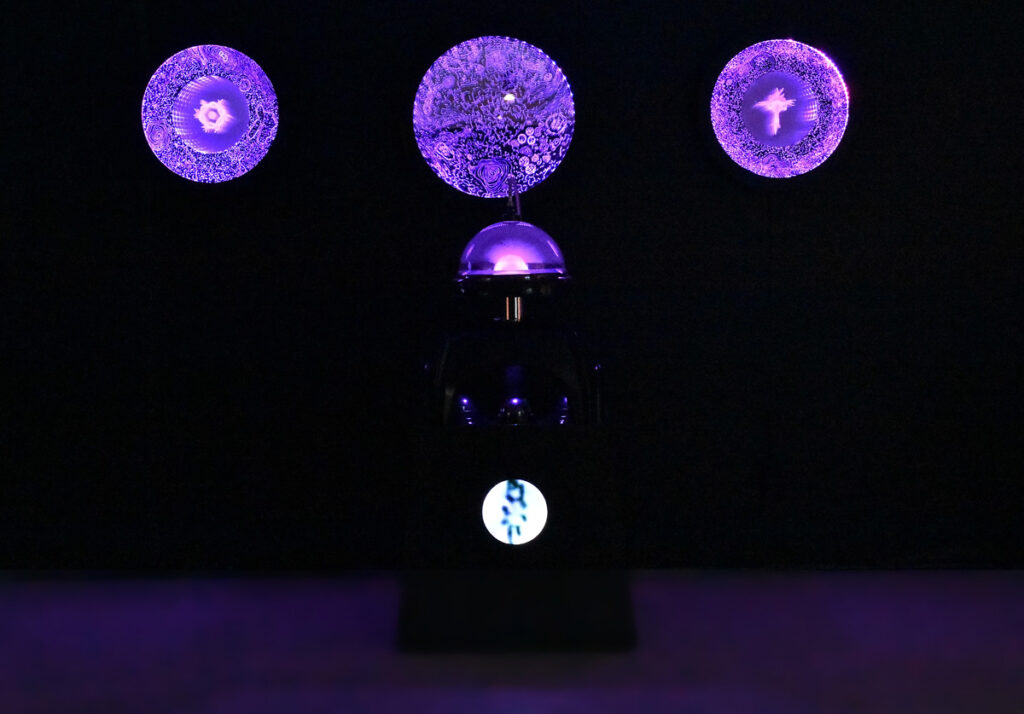Dr Svenja Kratz. Juried Artist
Ethos
SAE
Mon 24 June – Fri 28 June
Artist Statement
Genetic Legacy: Cell Babies [iPSC SK1 & SK2] by Svenja Kratz is a mixed media and video/audio work incorporating fixed cultures of induced pluripotent stem cell (iPSC) clones (SK1 and SK2) created by reprogramming the artist Svenja Kratz’s blood cells. Inspired by the relative immortality of cell lines and the artist’s dwindling reproductive capabilities, this work reflects on the potential of cell culture and genetic engineering technologies to acquire an alternative genetic legacy when traditional reproductive pathways are compromised. In this instance, the resulting iPSCs are envisaged as unconventional offspring for dissemination and proliferation via global biotech distribution networks. Building on precursor work The Contamination of Alice: Genetic Legacy, the revised edition includes a central sculptural element integrating fixed iPSC cell lines. This component is flanked by three interrelated sculptural panels. Incorporating laser engraved acrylic this element contrasts visuals of shared, deep-time, evolutionary and cross-species conceptions of life with current issues regarding ownership and commercial application. In this way, Genetic Legacy: Cell Babies [iPSC SK1 & SK2] reflects on more-than human entanglements and the conflicting priorities of personal/commercial gain versus shared responsibility. This iteration was researched and developed during a 2021 ANAT (Australian Network for Art and Technology) Synapse Art-Science Residency with scientific collaborators, A/Prof. Brad Sutherland and Dr Jo-Maree Courtney from the University of Tasmania’s School of Medicine.
About the artists
Svenja Kratz is an artist and researcher working at the intersection of art, science, and technology. She holds a PhD in Biotechnology and Contemporary Art from the Queensland University of Technology (QUT) with expertise in cell and tissue culture and interdisciplinary arts practice. Since 2008, she has worked with researchers across music, design, architecture, artificial intelligence, genetic engineering, molecular biology and biomanufacturing to produce collaborative and solo works that explore the complexity of living systems and highlight the philosophical and ethical implications of engineered life. She is a 2021 ANAT Synapse art-science recipient and her creative works have been exhibited at local, national and international venues including the Sydney Powerhouse Museum (2013), Contemporary Art Tasmania (2016), The Science Gallery London (2019) and World Science Festival Brisbane (2024). Svenja is currently based in lutrawita Tasmania where she works as a senior lecturer in interdisciplinary creative practice at the University of Tasmania.
Credits: Svenja Kratz

